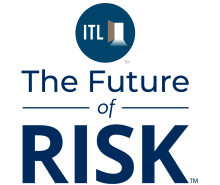The adage, "There's just not enough hours in a day," often resonates with commercial underwriters. In addition to policyholder expectations, they grapple with mounting competition, limited visibility into risk factors, and resource constraints that hinder comprehensive exposure analysis.
These challenges persist as insurers and program administrators/managing general agents (MGAs) strive to enhance risk-assessment capacity and proficiency. Fortunately, generative AI advancements offer solutions and relief, enabling underwriting teams to alleviate capacity constraints and improve operational efficiency.
Generative AI is already making waves in the insurance industry by automating repetitive tasks, extracting insights from documents, and supporting critical functions like risk evaluation, fraud detection, and claims adjudication. The next evolution of this technology—reasoning and self-learning AI assistants—promises to revolutionize commercial underwriting.
Agentic AI in the form of cognitive, persona-based assistants can be tailored to specific roles, automating workflows and executing complex tasks with precision. By functioning as digital co-workers, they empower underwriters to focus on high-value activities while gaining reliable, data-driven AI assistant support to manage essential responsibilities such as classification, risk appetite determination, and portfolio management.
Enhancing Underwriting Efficiency
AI assistants offer scalable solutions for business classification, risk analysis, and decision-making, bolstering risk assessment across various lines of business. Take Lessor's Risk Only (LRO) policies, which can be challenging to underwrite due to the dynamic nature of tenant occupancy.
Insurers and MGAs can mitigate reliance on policyholder or agent inputs by deploying a role-based AI assistant. The digital teammate can ingest underwriting guidelines and apply them alongside real-time occupancy data, enriching workflows with expedient insights. The AI assistant can be trained to immediately alert underwriters if a high-risk tenant—such as a sports bar, liquor store, or gun shop—moves into a property. This enables timely reviews of the property owner's policy (and potentially adjacent tenant policies), ensuring adequate coverage and risk mitigation.
AI assistants also enhance productivity in high-volume segments like small and medium business (SMB) policies. Insurers and MGAs must rapidly assess risk and bind policies to maintain profitability in this competitive market. AI assistants streamline this process by swiftly determining whether submissions align with risk appetite and consistently addressing risk-assessment queries. By automating these tasks, underwriters can dedicate more time to complex risks, accelerate quote-to-bind timelines, and improve submission throughput.
Strengthening Premium Audit Processes
Beyond underwriting, AI assistants can optimize connected processes, such as premium audits, critical for ensuring accurate coverage and pricing based on actual exposures. Premium audits are particularly valuable in assessing business exposures, where operational changes can occur rapidly. For example, when purchasing a workers' compensation policy, a small construction company might initially classify employees in less risky roles. However, if the company pivots its operations mid-term, a reclassification may be necessary, affecting coverage scope and premium pricing.
Traditional premium audit processes are often time-consuming and prone to backlogs. A premium audit expert AI assistant can alleviate these inefficiencies by automating tasks such as applying insurer guidelines and state-specific regulations to submission documents. They can identify missing or incomplete information and autonomously conduct audits, ensuring compliance with standards. Insurers can enhance customer experience, foster loyalty, and improve retention rates by expediting audit completion and providing policyholders with timely advisory guidance.
Fostering Collaboration Across Functions
AI assistants are not confined to isolated tasks; they can be trained to collaborate across insurance functions, creating a cohesive ecosystem. For instance, an AI assistant supporting underwriting teams in risk analysis and eligibility determination can seamlessly integrate with a claims-focused counterpart. Those assistants can share information and learn from each other, establishing a valuable feedback loop. If a claims AI assistant detects an unusual volume of submissions in a specific risk category, it can alert the underwriting team to review and potentially adjust eligibility guidelines. This approach enhances decision-making and ensures consistency across workflows.
Driving Enterprise Growth Through AI Integration
Integrating autonomous AI assistants into underwriting and operational workflows represents a consequential shift in the operational advancement of insurers and MGAs. By streamlining processes, enhancing risk assessment capabilities, and fostering cross-functional collaboration, smart digital co-workers enable organizations to scale operations and achieve cost-efficient growth. From expediting SMB policy underwriting to improving premium audits and providing real-time insights in a rapidly evolving risk landscape, AI assistants can enable efficiency and precision in commercial lines underwriting.
As generative AI technology evolves, its potential to boost competitive advantage and reshape insurance operations grows exponentially. Commercial insurers and MGAs that embrace these advancements will be better positioned to navigate the complexities of an increasingly dynamic market, fortify their risk-assessment proficiency and agility, and deliver superior value to policyholders.






